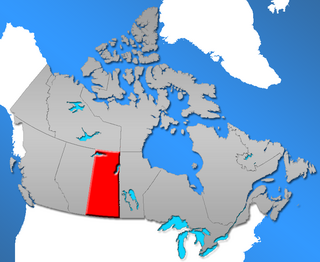Related Research Articles
The Canada Pension Plan is a contributory, earnings-related social insurance program. It forms one of the two major components of Canada's public retirement income system, the other component being Old Age Security (OAS). Other parts of Canada's retirement system are private pensions, either employer-sponsored or from tax-deferred individual savings. As of Jun 30, 2022, the CPP Investment Board manages over C$523 billion in investment assets for the Canada Pension Plan on behalf of 21 million Canadians. CPPIB is one of the world's biggest pension funds.
A Roth IRA is an individual retirement account (IRA) under United States law that is generally not taxed upon distribution, provided certain conditions are met. The principal difference between Roth IRAs and most other tax-advantaged retirement plans is that rather than granting a tax reduction for contributions to the retirement plan, qualified withdrawals from the Roth IRA plan are tax-free, and growth in the account is tax-free.
A registered retirement savings plan (RRSP), or retirement savings plan (RSP), is a type of financial account in Canada for holding savings and investment assets. RRSPs have various tax advantages compared to investing outside of tax-preferred accounts. They were introduced in 1957 to promote savings for retirement by employees and self-employed people.
Taxation in Canada is a prerogative shared between the federal government and the various provincial and territorial legislatures.
A 529 plan, also called a Qualified Tuition Program, is a tax-advantaged investment vehicle in the United States designed to encourage saving for the future higher education expenses of a designated beneficiary. In 2017, K–12 public, private, and religious school tuition were included as qualified expenses for 529 plans along with post-secondary education costs after passage of the Tax Cuts and Jobs Act.
A Coverdell education savings account, is a tax advantaged investment account in the U.S. designed to encourage savings to cover future education expenses, such as tuition, books, and uniforms. It is found at Section 530 of the Internal Revenue Code. Coverdell ESAs were first introduced under the Taxpayer Relief Act of 1997.

The Canada Deposit Insurance Corporation is a Canadian federal Crown Corporation created by Parliament in 1967 to provide deposit insurance to depositors in Canadian commercial banks and savings institutions. CDIC insures Canadians' deposits held at Canadian banks up to C$100,000 in case of a bank failure. CDIC automatically insures many types of savings against the failure of a financial institution. However, the bank must be a CDIC member and not all savings are insured. CDIC is also Canada's resolution authority for banks, federally regulated credit unions, trust and loan companies as well as associations governed by the Cooperative Credit Associations Act that take deposits.
Ted Menzies is a former Canadian politician. He represented the electoral district of Macleod in the House of Commons of Canada and served as Minister of State for Finance before being replaced by Kevin Sorenson. He resigned from Parliament on November 6, 2013, in order to accept a position as president and CEO of CropLife Canada, a lobby group representing the agricultural biotechnology industry.
Income taxes in Canada constitute the majority of the annual revenues of the Government of Canada, and of the governments of the Provinces of Canada. In the fiscal year ending 31 March 2018, the federal government collected just over three times more revenue from personal income taxes than it did from corporate income taxes.
The Canada Education Savings Grant (CESG) is part of a Government of Canada program, administered through Employment and Social Development Canada, to assist with savings for Canadian children's higher education. Under the CESG program, the government will contribute an amount to a Registered Education Savings Plan (RESP) according to a formula which is dependent on the amount contributed and the income level of the family making the contributions. As of 1 July 2005, the CESG is legislated by the Canada Education Savings Act.

Social programs in Canada include all Canadian government programs designed to give assistance to citizens outside of what the market provides. The Canadian social safety net includes a broad spectrum of programs, many of which are run by the provinces and territories. Canada also has a wide range of government transfer payments to individuals, which totaled $176.6 billion in 2009—this cost only includes social programs that administer funds to individuals; programs such as medicare and public education are additional costs.
A tax-free savings account is an account available in Canada that provides tax benefits for saving. Investment income, including capital gains and dividends, earned in a TFSA is not taxed in most cases, even when withdrawn. Contributions to a TFSA are not deductible for income tax purposes, unlike contributions to a registered retirement savings plan (RRSP).

Historically, Saskatchewan's higher education system has been "significantly shaped" by demographics. In 1901, six years prior to the 1907 founding of a university in Saskatchewan, the urban population in Saskatchewan was 14,266 (16%) while the rural population was 77,013 (84%). One hundred years later, the proportions had changed significantly: urban population in 2001 was 629,036 (64%) while the rural population was 349,897 (36%). Over time the province's higher education system has changed significantly in response both to this demographic shift and to provincial politics.

Higher education in Alberta refers to the post secondary education system for the province of Alberta. The Ministry of Advanced Education in Alberta oversees educational delivery through universities, publicly funded colleges, technical institutions, and private colleges. These institutions offer a variety of academic and vocational pursuits. Students have access to post-secondary options through most regions of Alberta, and a developed articulation system allows for increased student mobility.

The Canada Learning Bond (CLB) is a grant paid by the government of Canada to assist low-income families with saving money for their children's post-secondary education. The CLB relies primarily on the National Child Benefit (NCB) program to determine which families may be eligible and the tax regulations for the Registered Education Savings Plan (RESP) to guide the eventual use of the CLB funds. As of 1 July 2005, the CLB is legislated by the Canada Education Savings Act.
A registered disability savings plan is a Government of Canada program designed to enable individuals with disabilities, with assistance from family and friends to save for their future financial security. The Government of Canada assists people to save with the Canada Disability Savings Program, consisting of the Canada Disability Savings Grant and Canada Disability Savings Bond. The Canada Disability Savings Grant matches personal contributions. The Canada Disability Savings Bond provides funding to RDSPs of people with low and moderate incomes.

Pensions in Canada can be public, private, and collective, or come from individual savings.

The Canadian federal budget for the 2008-2009 fiscal year was presented to the House of Commons of Canada by Finance Minister Jim Flaherty on February 26, 2008.
The Canadian federal budget for fiscal year 1997-1998 was presented by Minister of Finance Paul Martin in the House of Commons of Canada on 18 February 1997. It is the last budget of the 35th Canadian Parliament and the last budget before the 1997 Canadian federal election. The budget's unofficial subtitle is Building the Future for Canadians.

The Canada Education Savings Act (CESA) is an Act of the Parliament of Canada. It is intended to provide financial assistance for post-secondary education savings. The first version of the law was assented to on 15 December 2004. Most sections of the act entered into force on 1 July 2005.
References
- ↑ staff, Globe; contributors (2022-05-02). "What is a RESP? How to save for your child's education in Canada". The Globe and Mail. Retrieved 2022-06-07.
{{cite news}}:|last2=has generic name (help) - ↑ Canada, Government of Canada, Employment and Social Development. "Saving for your Child's Education". www.esdc.gc.ca. Retrieved 2015-12-13.
{{cite web}}: CS1 maint: multiple names: authors list (link) - ↑ Canada, Employment and Social Development (2015-10-23). "Information about Registered Education Savings Plans (RESPs)". aem. Retrieved 2020-08-13.
- ↑ Canada, Government of Canada, Employment and Social Development. "Canada Education Savings Grant | RESP and Education Savings in Canada | CanLearn.ca". www.canlearn.ca. Retrieved 2015-12-13.
{{cite web}}: CS1 maint: multiple names: authors list (link) - ↑ Canada, Government of Canada, Employment and Social Development. "Canada Learning Bond | RESP and Education Savings in Canada | CanLearn.ca". www.canlearn.ca. Retrieved 2015-12-13.
{{cite web}}: CS1 maint: multiple names: authors list (link) - ↑ CanLearn (November 9, 2009). "Alberta Centennial Education Savings Plan Quick Facts". Government of Canada. Retrieved 2010-03-03.
- ↑ Alberta Enterprise and Advanced Education. "Alberta Centennial Education Savings Plan". Alberta Government Ministries. Retrieved 2013-05-25.
- ↑ Alberta Enterprise and Advanced Education. "Alberta Centennial Education Savings Plan". Alberta Government Ministries. Retrieved 2015-03-31.
- ↑ Government of Saskatchewan (2012-12-03). "Saskatchewan Advantage Grant for Education Savings Legislation Passed" . Retrieved 2013-03-25.
- ↑ Collette, Olivia (2015-11-16). "The RESP: A win-win for families and society". Montreal Gazette. Retrieved 2019-01-17.
- ↑ Revenu Québec. "Québec education savings incentive". Gouvernement du Québec. Retrieved 2010-03-03.
- ↑ Revenu Québec. "Determining the QESI amount". Gouvernement du Québec. Retrieved 2010-03-03.
- ↑ Canada, Employment and Social Development (2015-10-23). "Information about Registered Education Savings Plans (RESPs)". aem. Retrieved 2020-08-13.